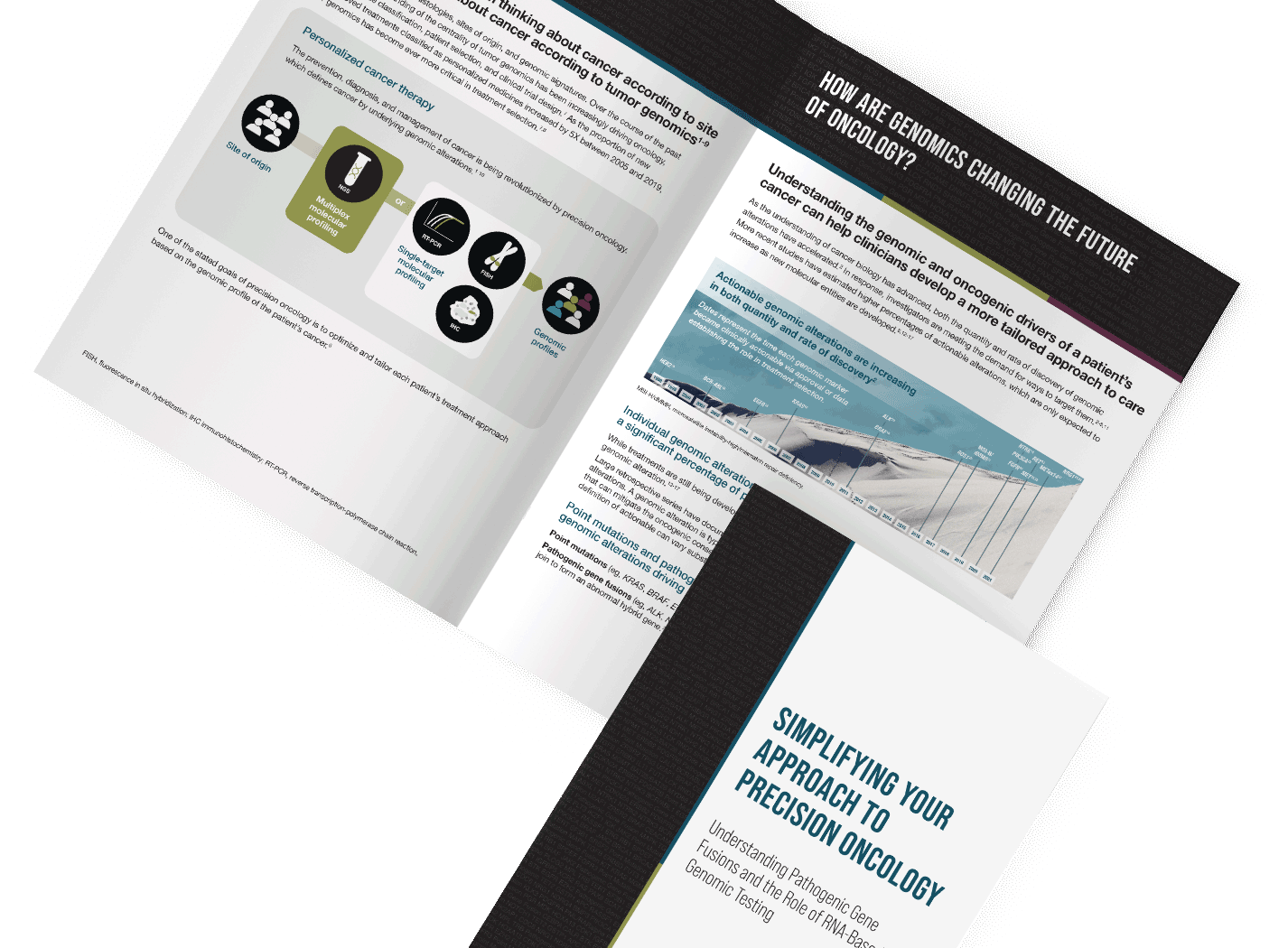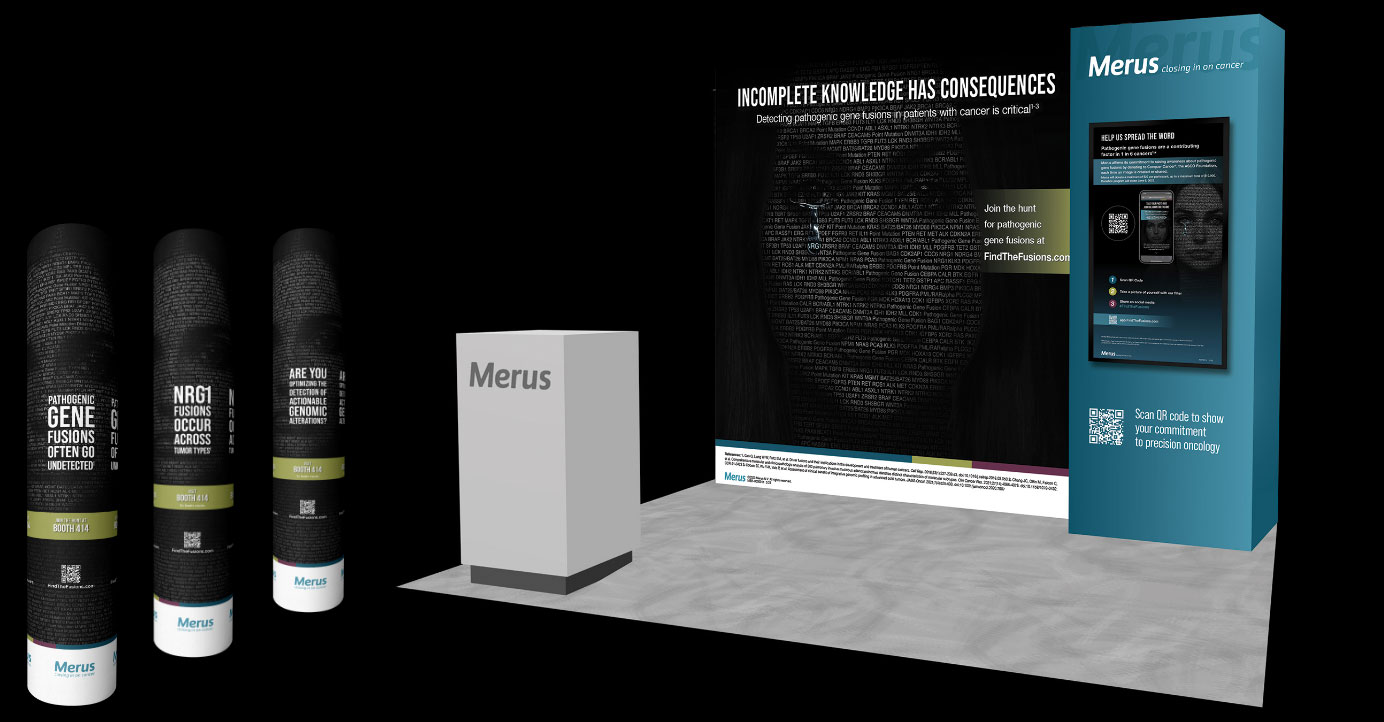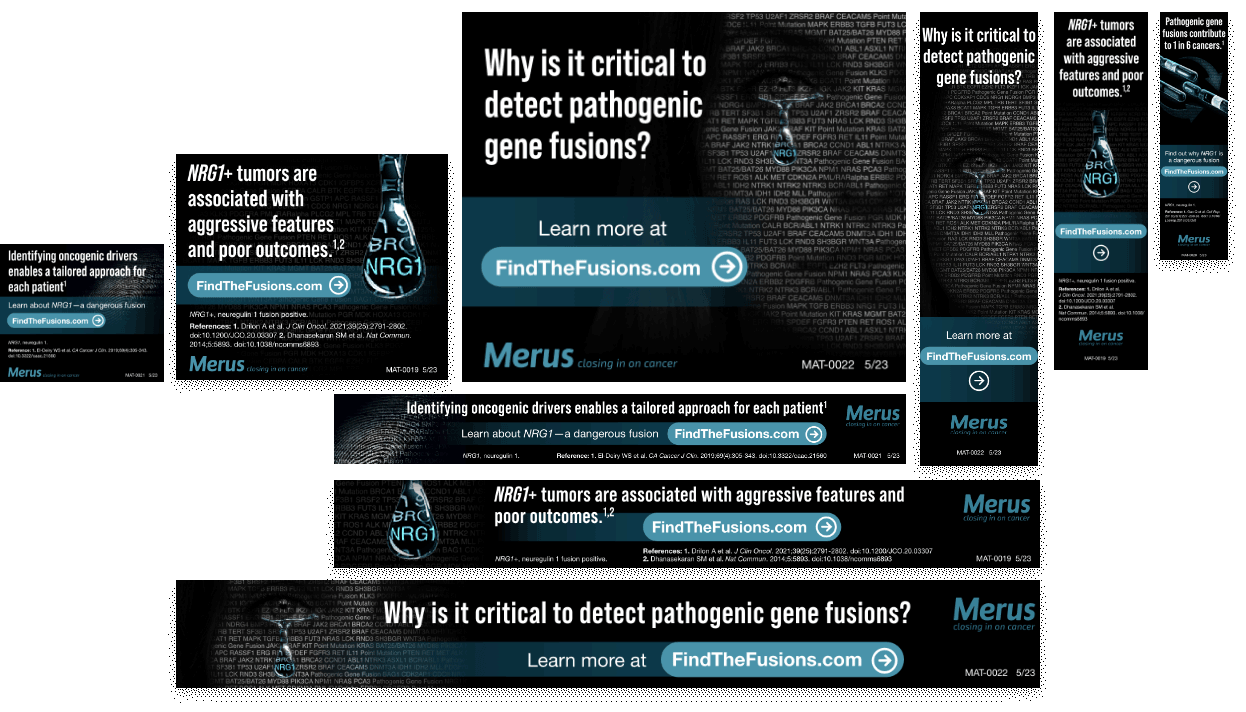


Pathogenic gene fusions are a contributing factor in 1 in 6 cancers, and they often go undetected.
Challenge
Precision oncology centers on learning about the genomics of each patient’s tumor in order to match it with 1 or more of the growing number of targeted cancer treatments. With actionable alterations, oncologists can offer more efficacious treatments that may also be easier for patients to tolerate.
We have really only scratched the surface of what there is to learn about tumor genomics. One promising area of research concerns pathogenic gene fusions, which are often associated with more aggressive tumors and a poorer prognosis for patients.
The field of cancer genomics is advancing so rapidly—faster than many health care professionals (HCPs) are able to keep up with. As such, some do not fully grasp the benefits of detecting pathogenic gene fusions. A key goal of our campaign is to show recent data that reflect how the latest advancements in precision oncology can tangibly benefit patients with cancer today.
Solution
The Merus “Find The Fusions” campaign is meant to be a visual depiction of genomic alterations that are “hiding in plain sight.” It shows a broad landscape of alterations, using the scientific abbreviations for each one. Some are well known to oncologists, others they may have heard of but don’t know their clinical relevance, and some are brand new and largely unknown.
A single teardrop magnifies one area of particular interest to Merus, a pathogenic gene fusion called neuregulin 1 (NRG1) that has been implicated across tumor types, but most commonly in non–small cell lung cancer and pancreatic cancer.
The headline, “Incomplete Knowledge Has Consequences,” emphasizes the importance of selecting genomic testing methods that can detect newly discovered pathogenic gene fusions like NRG1. Turning a common phrase around, what they don’t know CAN hurt their patients.

Website
We created a disease state education (DSE) website directed toward HCPs that prominently features the Find The Fusions campaign. The site features background on the evolution of precision oncology and describes the impact of pathogenic gene fusions in general, and of NRG1 in particular. One focus is to highlight the importance of using RNA-based next-generation sequencing (NGS) for the comprehensive detection of dangerous fusions.
Monograph
Following the success of the DSE website, we created a detailed scientific monograph that provides evidence-based explanations with support from dozens of clinical studies about the promise of precision oncology, the problem of pathogenic gene fusions, and the potential of improving outcomes if the right tests are ordered.
The monograph seeks to complete whatever “incomplete knowledge” the HCP has with its in-depth format, with the goal of ultimately preventing or mitigating the associated consequences.


ASCO Journal Ad
This startling journal ad aims to inform HCPs about how widespread the problem of pathogenic gene fusions is (“1 in 6”) and highlight how they often go undetected. The goal is to create a sense of urgency that drives HCPs to act to “complete” their incomplete knowledge of their patients’ tumor genomics by ordering comprehensive genomic testing.
Educational Leave Behinds
Four flashcards were created for busy HCPs looking to quickly fill the gaps in their “incomplete knowledge.”
These more condensed “cheat sheets” serve to impart key information from each of the campaign’s 3 core messages: (1) precision oncology is an improvement over standard therapy for eligible patients; (2) pathogenic gene fusions such as NRG1 are dangerous, especially if left undetected; and (3) RNA-based next-generation sequencing is the most comprehensive way to detect the widest breadth of pathogenic gene fusions. The fourth flashcard is a condensed high-level summary of the most important takeaways from the campaign.


Conference Materials
This evocative 10-ft tall booth and 3 column wraps generate curiosity and create a sense of urgency about potential dangers facing their patients that they may not even know about. The remedy? Scanning the QR code to access the DSE website.
Web-Based AR Experience
To take our innovative campaign to the next level, we sought to add an interactive component: an augmented reality app that allowed HCPs to become the “face of fusions.” The real image from the attendee’s camera phone is blended with campaign elements, which drives the point home that fusions can be lurking behind any face—even their own.
This AR app encourages the user to share their image on social media, leading to increased campaign exposure. This will bring greater awareness to pathogenic gene fusions and how to detect them, which may potentially save lives. For each picture taken or shared on social media, Merus donated $20 to Conquer Cancer®, the ASCO Foundation.




Social Media Posts
The goal of these social media posts is to use a little-known fact—that pathogenic gene fusions are far more prevalent than commonly believed—to drive HCPs to learn more about what can be done. The overarching campaign theme of deadly fusions hiding in plain sight is on display, once again creating a sense of urgency that moves HCPs to act to improve outcomes.